Let’s admit it, and this is true for any shooter, there’s nothing more annoying than watching a clay fly off intact after you’ve taken a shot at it.
A zero can be even more demoralizing if it comes unexpectedly during a great series.
After every miss it’s important to start over and analyze the best solution, but perhaps the best solution of all is doing your best to avoid this situation in the first place.
So how can we make less mistakes and break more clays?
It’s a question all Skeet, Trap and Sporting shooters are always asking themselves. That’s because it isn’t easy to dust a clay, and constantly dusting a lot is difficult to say the least!
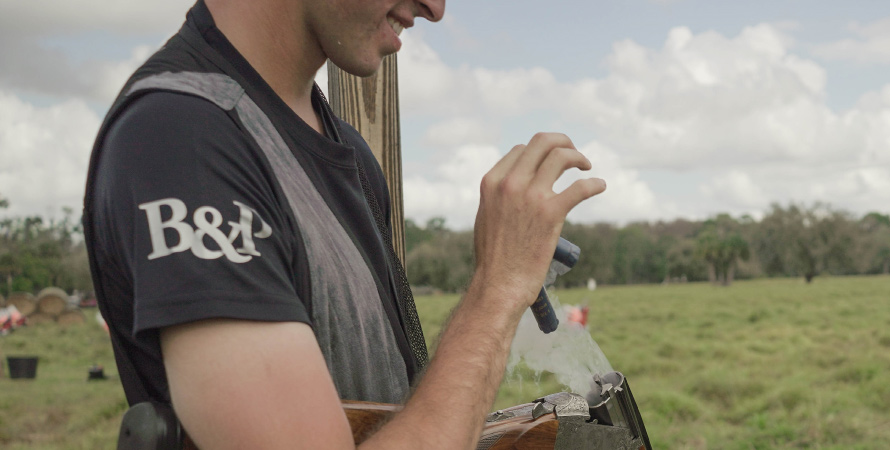
To dust one clay after another takes practice, and often the help of a good instructor too, but you can also improve your series by avoiding some common mistakes and following the advice you’ll find in this article.
We search fro them from international B&P shooters such as Riccardo Filippelli (ISSF Skeet Gold Medal and World Record), Alessia Iezzi (ISSF Trap Gold Medal) and Gebben Miles (Three times PSCA Tour Champion).
Let’s get started!
1) Improve your gun mount technique
You’ll start dusting clays when you start to raise the barrels of your gun, before you even call “pull”. This moment of preparation is often overlooked by novice shooters, but it’s essential if you want to take a perfect shot.
As far as Olympic or Universal Trench is concerned, when you shoulder the gun you should aim the barrels at a point that coincides with and is slightly higher than the trap the clay will soon be launched from.
From this moment, you have to sense and follow the trajectory of the launch, seeing the lead and taking the shot on the basis of the angle and speed of the clay, if possible without jerking the gun and keeping the barrels moving as you take the shot.
This will give the shot the necessary lead on the position of the clay in terms of space-time so the pellets and the target reach the same place at the same time.
In the starting position in Skeet and Sporting Clays, unlike Trap, before the gun is shouldered the barrels must be aimed at the point at which you’ll attempt to intercept the launch of the clay.
In this way, you don’t have to move the gun a lot, but just bring it to your shoulder and align your eye down the rib to be very near to the point in which you want to aim and fire to hit the clay.
In Trap, it’s essential for the stock to be perfectly positioned and snug in your shoulder, so when you shout “pull” and track the clay by turning your upper body, you won’t have to move the gun much or lift your cheek off the stock.
To improve your preparation in this phase it’s a great idea to practice shouldering your gun and preparing to call “pull” with the gun unloaded, both at home and on the shooting range.
This sort of dry-fire training is very useful to become familiar with raising the gun to your shoulder and aiming it, making the movement smooth. These two different and very important operations, with enough practice, can become one single, fluid movement that comes easily and naturally.
2) Shoot with both eyes open (if possible)
We recommend shooting with both eyes open most of the time when clay pigeon shooting. The reason for this is simple and, at the same time, it explains why some shooters close one eye to shoot (and rightly so!).
Our visual perception is based on information gathered by our eyes that’s then processed by the brain. So, what we see is real, but what we see as real will always depend on our perception. What’s more, while both eyes have the same function, they don’t work the same way.
When you track a clay or aim at any other object, just one of your eyes is aligned with the target. This is your dominant eye.
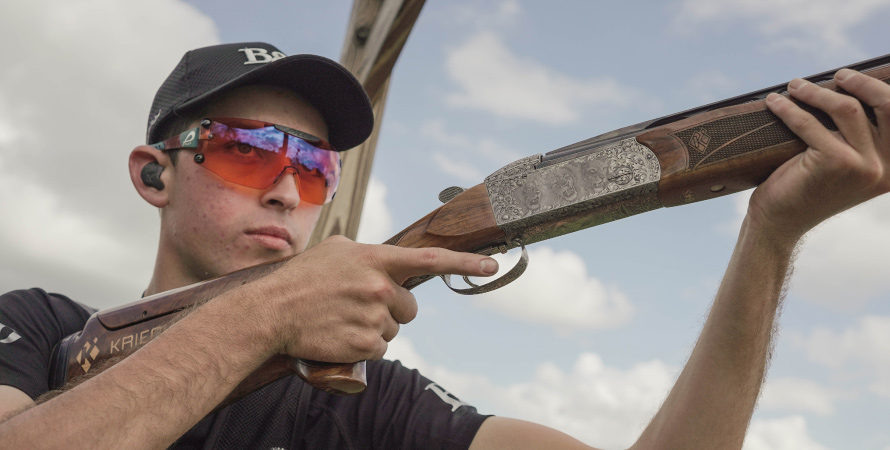
You use your other eye to look at the target, the distance it travels on its trajectory and to gather additional information such as for example to give you depth of field and see the clay in three dimensions.
So it’s easy to see why shooting with both eyes open gives you a clear advantage. You can obviously shoot and hit the plate after tracking it with just your dominant eye, but this puts you at a disadvantage because:
- It limits your field of view and you’ll see the clays launched to the left, later.
- You lose valuable information that your dominant eye alone can’t gather, and using both eyes helps estimate the range and trajectory and therefore also how much lead to use.
So why do some shooters close one eye?
Often your dominant eye will be the right eye if you’re right-handed or your left eye if you’re left-handed. In this case it’s perfectly natural to align your dominant eye with the rib of your gun and therefore also the front sight, when tracking the clays.
But this isn’t always true, in fact even if you’re right-handed, your dominant eye could be your left eye.
This complicates things, because you’ll tend to always track the clay with your left eye which won’t, of course, be aligned with the rib of the gun like the right eye is.
It’s difficult, although not impossible, for a right-handed person to hold a shotgun like a left-handed person, so what are the solutions in this case?
Some shooters prefer to get used to closing their left eye and just use their right one, even if it isn’t their dominant eye. It’s a possibility, and with practice it’ll become your habitual way of shooting.
Another more sophisticated solution is to track the clay with both eyes open to gather the greatest amount of information, then close your left eye just before taking the shot.
Both these solutions are valid because by practicing and training you can change which eye is “dominant”, so the best thing is to experiment with both techniques and see which suits you best.
3) Optimize and extend your upper body rotation to follow clays launched at an angle
In clay shooting you track the clays by turning your upper body, automatically swinging the barrels of the gun to see the right lead for the clay.
Clays launched at sharp angles, the trajectories of which will take them out of our field of view and line of sight, require a more marked, continued and extensive rotation of the upper body.
To do this you have to make sure your legs are in the right position on the platform so you can turn your upper body enough to easily track the clays.
If you don’t turn your upper body enough in the final phase when locking onto the target, you’ll tend to point the gun at the clay using only your arms, and by doing so you’ll lose your balance and the ideal stance that gives you the best alignment with the clay when taking the shot.
A fast, full rotation of the upper body lets you track even very difficult and fast-moving clays. One fine example of this is the difficult and hard-to-hit rabbit clay launched in Compak & Sporting competitions.
Understanding whether your legs are in the right position is easy.
If you’re right-handed, try to track an imaginary clay crossing your entire line of sight. When you feel the muscle behind the thigh of your left leg twisting this means you’ve reached the limit of how far you can turn your upper body.
Stop moving your gun and check to see how far you’ve turned. If the angle of rotation isn’t enough, correct the position of your legs slightly and above all your feet so you can turn your upper body more in the desired direction.
4) Always keep your head down (even after taking the shot!)
Your head should be “straight down” the stock of the gun without tilting it, so your eye is perfectly in line with the rib and front sight.
You shouldn’t have to tilt your head to do this, because otherwise you’ll think you’re aiming at one particular point but the barrels will be pointing somewhere else!
You should keep your head in the right position until a few seconds after having taken the shot.
Many shooters are curious to see the clay break or simply want to know where their shot went and tend to lift their head up just a fraction of a second before squeezing the trigger. This has a negative effect on your alignment with the target and will tend to send your shot much too low.
Or, as happens more often than you might think, you might unwittingly tense up or change the position of your head in expectation of the gun’s kick, before you even take the shot. Or the recoil produced by the gun can unbalance your whole body making it very difficult to take a second shot at the clay if you missed with the first.
In all these cases, your aim with the gun on the clay will be lacking in terms of precision and effectiveness. So, first and foremost, it’s important to have a slightly forward-balanced stance to compensate for the effect of the gun’s recoil.
Creating a perfect connection between gun, cheek, shoulder and arm will also have a particularly positive effect and make aiming the barrels fast, fluid and natural as a result of simply turning your body with the gun solidly and snuggly connected to it.
It’s always a great idea to ask an observer or instructor to help you understand where your shot is going, and how to correct any aiming errors.
Finally, you have to practice a lot to get used to firing the gun without letting the recoil unbalance you, taking aim in an effective and natural way even after your first shot.
5) Don’t wait too long to squeeze the trigger
Some shooters, with their shooting technique, tend to “dust clays” almost as if they’re point shooting as soon as the clay is launched. It’s a very spectacular technique and highly effective too, but it won’t suit everyone.
Other shooters have a technique that’s more fluid and pondered, they tend to wait for the clay, track it, then see the right lead before taking the shot.
In this case though there’s the risk of waiting too long to squeeze the trigger. In most clay pigeon shooting disciplines, the time you take to aim at the clay and take the shot makes all the difference between a hit or a miss.
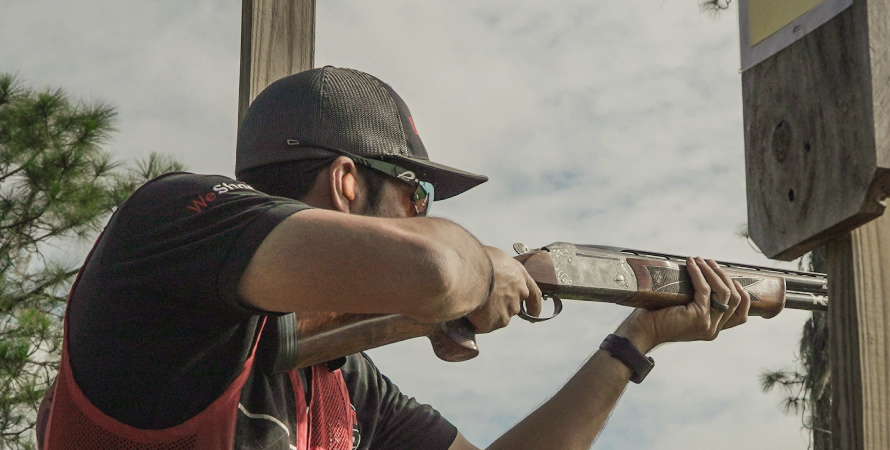
The pellets we shoot after clays lose a lot of their velocity and energy as the range increases, and to break a clay at long range you have to be sure you hit it with a sufficient number of pellets.
What’s more, if you have a second barrel you can fire at the same clay on the chance you missed with the first, waiting too long to fire your first barrel makes your second much less effective because you’ll have to take the shot at the limit of your gun’s ballistic performance.
6) Automate all your movements and eliminate any unnecessary ones
The shooter who moves least is the shooter who dusts most clays.
Just watch shooters in international clay pigeon shooting competitions; they seem to move like machines or robots. How do they do that?
The first fundamental step is to eliminate all the movements you don’t need or that you’re unconsciously making when aiming and shooting your gun at the clays.
In this case the help of a qualified instructor is absolutely necessary to observe and evaluate how you can improve, and give you some valuable advice. Every shooter has their own particular technique, so it’s impossible and would also be wrong to give general advice in this sense.
Once you’ve learnt the right movements for your shooting technique, you’ll need to train and practice them a lot.
The aim is to automate all the various phases of your shooting; from shouldering the gun to aiming at the clays, right up to after you’ve taken the shot.
This is the most difficult part!
The more you manage to automate the right movements, the easier it’ll be to dust clays because you won’t have to think “Am I doing the right thing?” as you’ll simply already know it.
It’s a bit like when we’re learning to drive a car.
At first you think about everything you do, such as switching on the indicator and changing gear, then as you become more experienced all your actions become automatic and you just end up concentrating on “driving”. Sound familiar?
7) Change your clay shooting shells
Regardless of a shooter’s experience, if you want to dust more clays, you must know why and when you have to change shells.
Experienced shooters with a well consolidated shooting technique make very few mistakes, and two or three unbroken clays can make all the difference. In these cases the zeros are due to small and all but imperceptible targeting errors, which can cause the pellet stack to just wing the clay.
So it’s well worthwhile to choose more high-performance shells, designed specifically to limit the effect of these minor errors as far as possible and help the shooter improve their score.
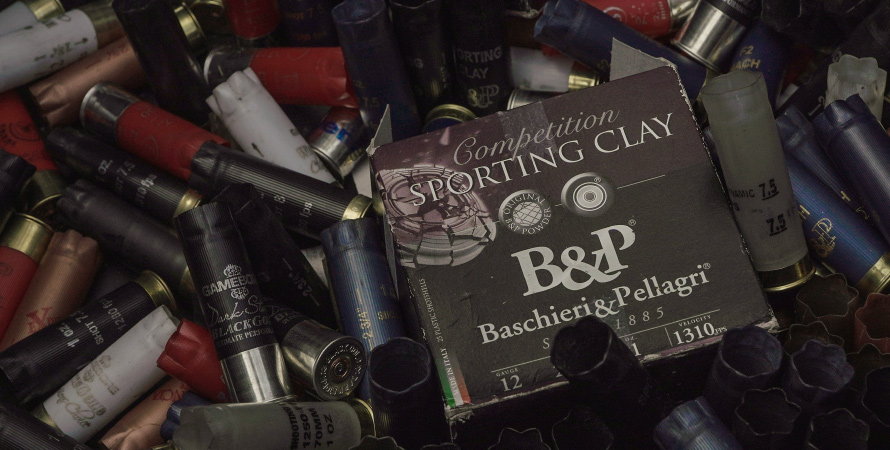
On the other hand, people often say a shooter just starting in clay pigeon shooting should choose the cheapest shells possible. But is this really true?
We can consider it a half-truth!
It’s true that it makes no sense for someone just starting to use competition shells to shoot their first clays. First, because they won’t notice any difference, and second because they’ll just be throwing their money away. It’s better to invest in a good instructor!
But it’s also true that someone trying their hand for the first time at clay pigeon shooting is in a very delicate situation. On the one hand they have to learn all the movements necessary to aim at, track and break clays, and on the other they have to get to know their gun.
Shells that are too cheap will make the entire process of preparation and learning how to shoot more complex and in some cases even make all our efforts vain due to low ballistic performance or poor quality shot patterns.
When choosing which shells to start shooting clays with, the most important thing is to put your trust in a serious ammo manufacturer, well-known for the quality of their products.
A good quality shell, even if it’s an averagely cheap option, will give you perfect ballisti performance, sufficient to guarantee breaking all the clays you hit.
8) Ask an instructor before making any changes to your shotgun
This is a “minefield” which can also have disastrous consequences in terms of costs and missed shots for any shooter.
It’s impossible to deny the fact that some modifications made to your shotgun are strictly necessary to adapt it to you both physically and in terms of your shooting technique.
In fact, when you buy a new shotgun an experienced gunsmith will make the first changes to adapt the gun to the shooter, for the best stock alignment to give you that perfect collimation of the targeted point with the actual center of your shot pattern.
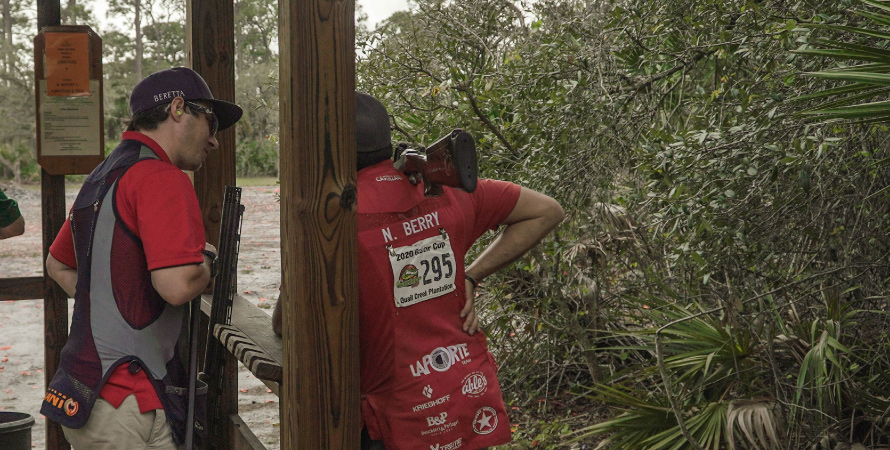
It’s not a good idea to make any changes until the shooter feels at ease with his/her new gun and has assimilated and automated their shooting technique so its consistently the same.
It’s only at this point that you should adapt the gun by making some changes, following a criterion, as whether they work or not will be immediately obvious. It’ll be easier to understand if something isn’t working, and go back to what was working, if necessary.
Furthermore, in these cases, it’s better to put your trust in the advice of an instructor because by watching you they’ll be able to give you some tips on changes you won’t have thought about or evaluated.
It’s essential to observe the shooter with his/her gun shouldered both at a bench in a shooting simulation, and on the platform while shooting, observing both from the side and behind, to make sure the shooter doesn’t change position or make movements that weren’t obvious when they were just shouldering the gun.
Finally, any changes made to the gun should always be considered carefully because they can upset automated habits and movements that took a lot of time and practice to get right.
Any changes must also be reversible in order to go back to the original setup if the modification is unsuitable or doesn’t produce the expected results.
8+1) What is clay pigeon shooting for you?
This isn’t advice you might say, but we’ve decided to include it and also leave it for last, because it is advice, and it’s very important to be able to answer the question, or at least try.
There are shooters who love clay shooting but prefer to consider it as just a hobby, perhaps spending an afternoon at the range with friends, having fun dusting a few clays. Some wouldn’t dream of competing in tournaments or putting themselves to the test. There’s nothing wrong with this, on the contrary it’s a great way to enjoy the sport!
Then there are shooters who love the “sporting essence” of clay pigeon shooting, and like all other sports this means competing, putting yourself to the test and training to see how you can exceed your limits.
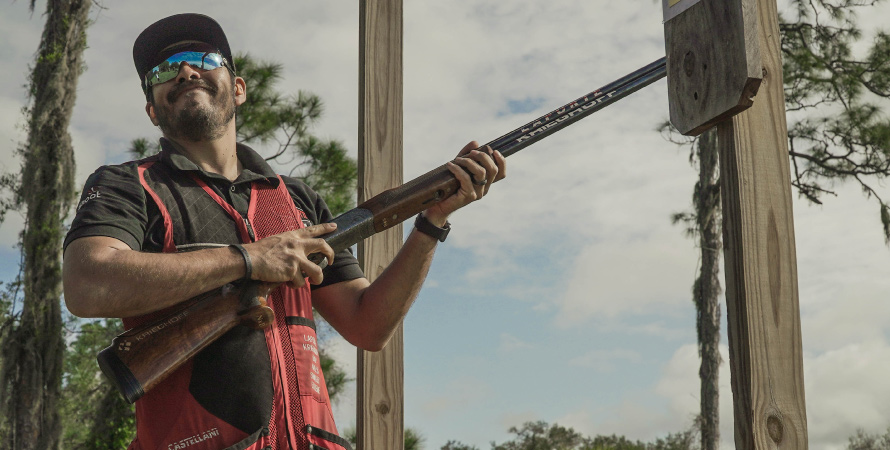
This is why training is such fun, and the satisfaction you get when you finish your series with a Straight 25 is truly priceless. If this is followed by your first wins, you can’t wait to put yourself to the test again in the next tournament!
As in all sports, there’s no one “right way" to practice it, because you should simply do what makes it fun for you!
We left this for last for exactly this reason, because it will help you take difficult decisions and get the best out of the tips you’ve read in this article or you might find in others.

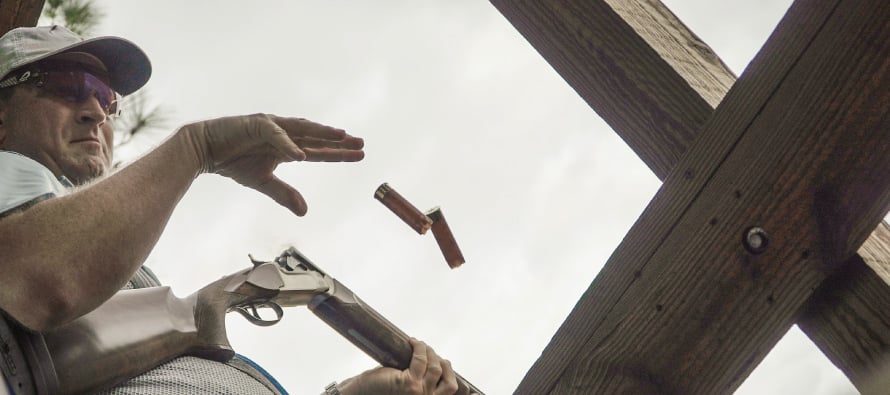
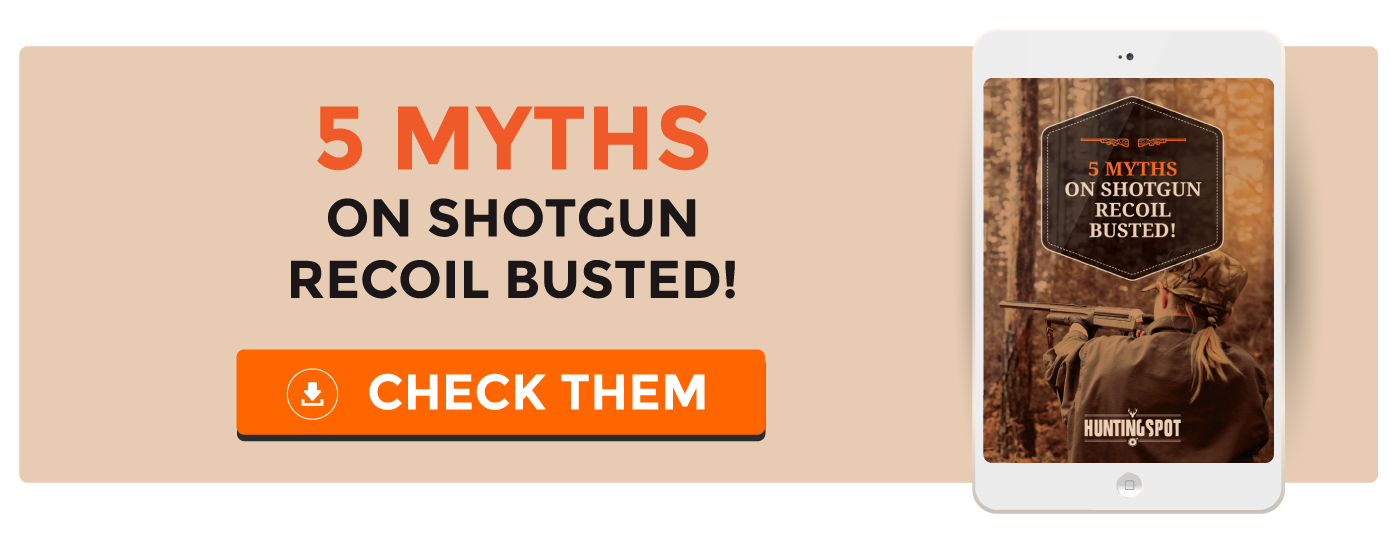

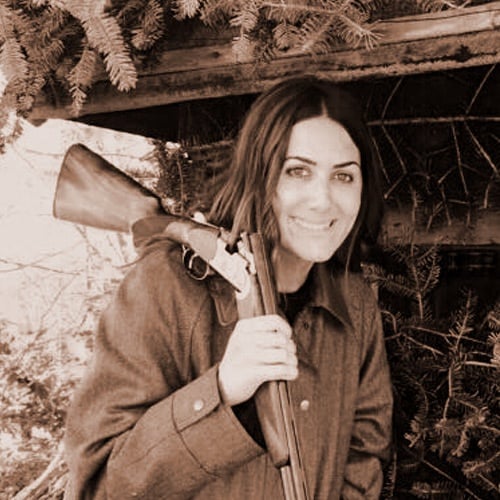
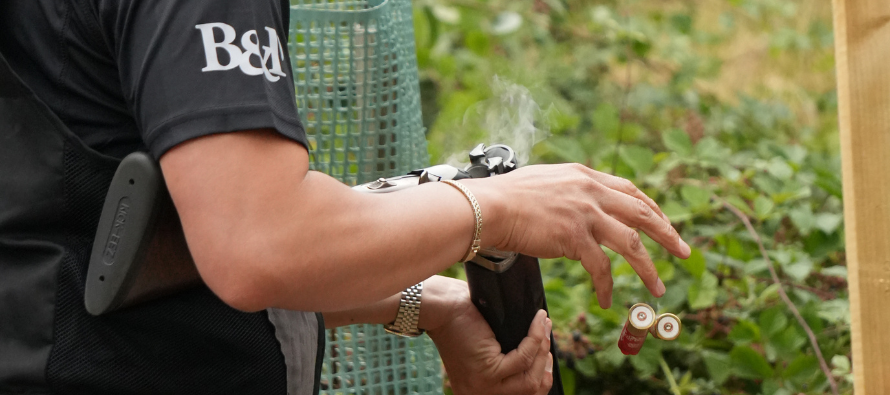
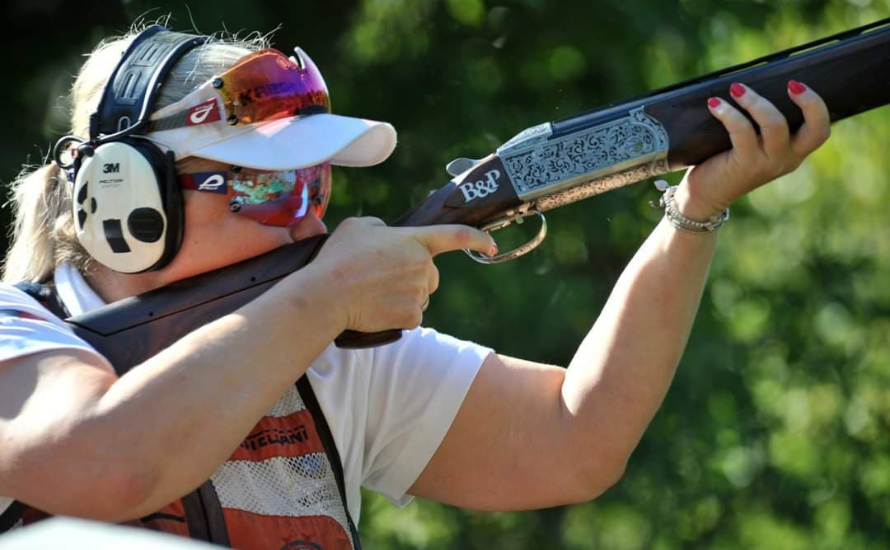
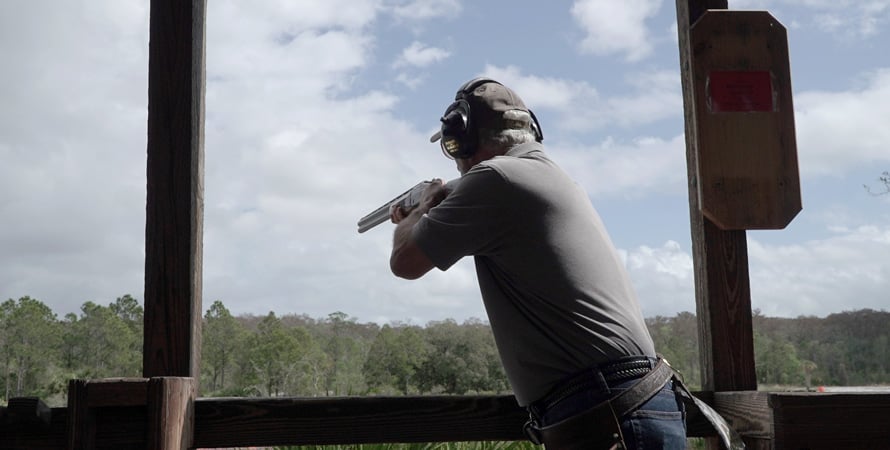
Comment this post